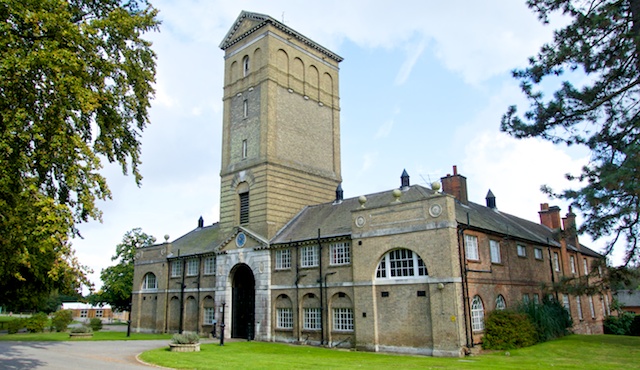Pictures of buildings mentioned in the second edition “Suffolk” volume of “The Buildings of England” series by Sir Nikolaus Pevsner.

The rear:

The central bow windows can be seen slightly more clearly to the left below:

Pevsner continues: “To the SE Stables. Quadrangle with handsome front of c1776 and recent tower over the archway.” Seen here:

In The Manors of Suffolk, Vol 6, by Copinger ((p125) it is noted that William Berners purchased the estate for £14,000 in about 1773. “The estate then consisted only of the house and park, the former of which stood where the stables now stand”. Copinger notes that the new hall is built of Woolpit brick, with stone dressing. The Berners were also at Erwarton.
At some stage during the ownership of the Berners various other properties were added to the estate, including Freston Tower. Since 1937 there have been numerous owners and uses, including World War II occupation by the War Office and Admiralty. It is now the Ipswich School for Girls.